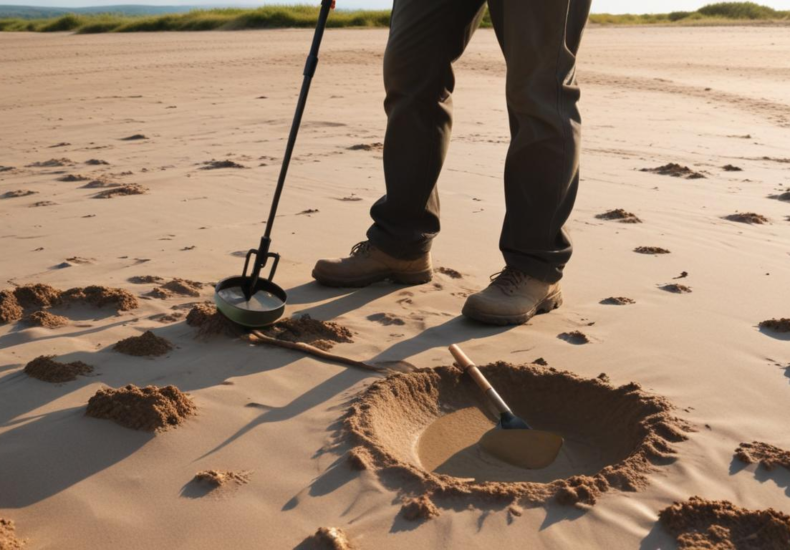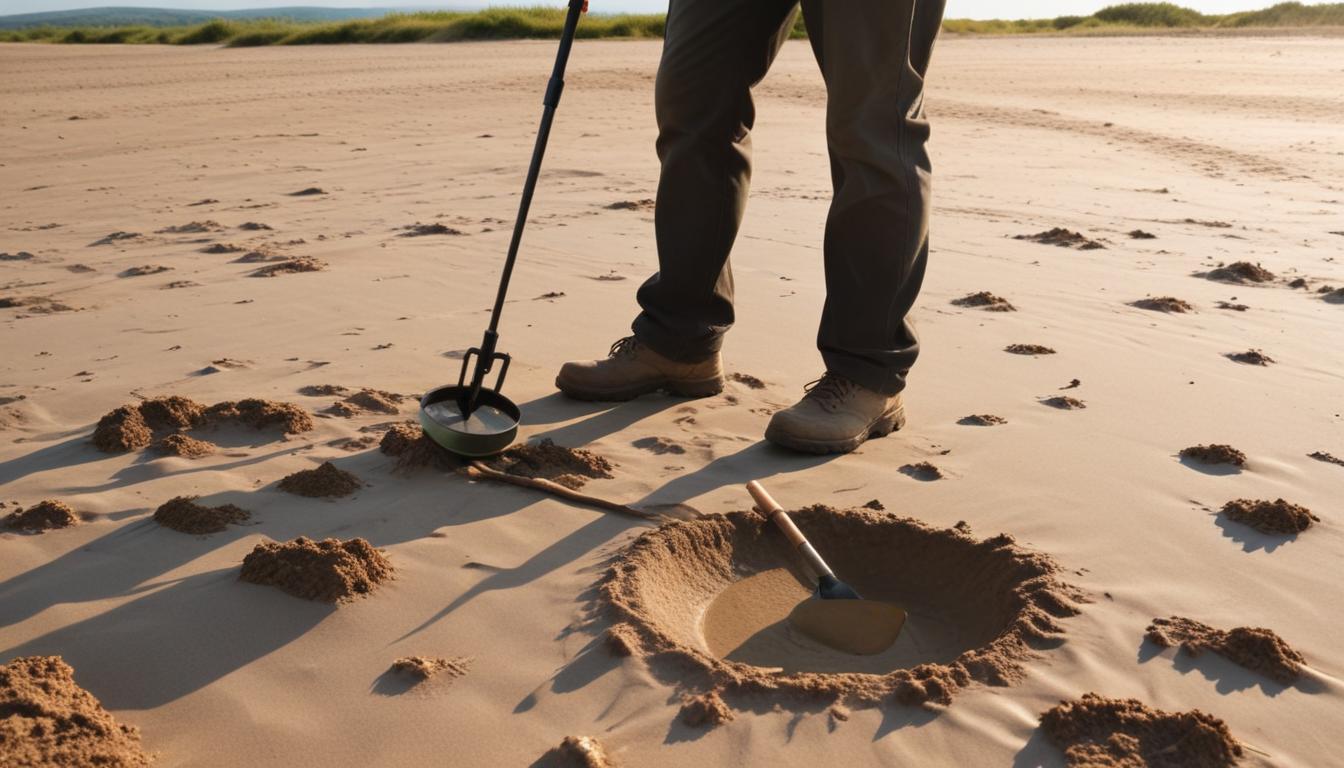
Best times of day for metal detecting success
When planning your detecting schedule, understanding the optimal light conditions is crucial for a successful metal detecting outing. The clarity and intensity of light during different times of the day can significantly impact your ability to spot signals and dig efficiently. Generally, early morning offers a soft, even light that enhances visibility on the ground, making it easier to identify changes in soil texture and spot potential finds. This lighting can be particularly beneficial for those who use visual cues to distinguish between different types of metals or objects.
As the day progresses, the afternoon sun can create glare and shadows, which may hinder your ability to effectively search for metal objects. However, for beach detecting, some enthusiasts prefer late afternoon because the declining angle of the sun’s rays can help illuminate metallic objects on the surface, especially when the sun is at your back. Additionally, during summer, the cooler temperatures of early morning and late afternoon make for a more comfortable experience, which can extend the duration of your search and potentially increase your findings.
You should also consider the weather conditions in relation to light when planning your outings. Overcast days, while often overlooked, can provide consistent lighting conditions without the challenges of direct sunlight. This diffuse light minimizes glare and can reveal subtle changes in the ground surface, which might help in spotting targets that would otherwise be missed in harsher conditions. Thus, incorporating weather forecasts into your detecting schedule is key to taking full advantage of ideal light conditions for metal detecting.
Analyzing weather and seasonal impacts
Weather and seasonal changes play pivotal roles in the success rates of metal detecting adventures. As the environment alters throughout the year, so too does the best strategy for timing your searches. For instance, the colder months often provide a unique opportunity as many people are less likely to frequent outdoor locations, reducing the competition and leaving more potential finds less disturbed. However, frozen ground can be challenging to dig, so detecting during the midday when temperatures may be slightly higher will offer a softer soil consistency that is easier to manage.
In contrast, the warmer months bring their challenges and advantages. While summer can make the soil dry and hard, which might make digging more laborious, the increased foot traffic in popular areas like parks and beaches can often mean more recently dropped items are available to discover. Scheduling your sessions in the early morning or late afternoon during these months avoids the peak heat and generally provides a more comfortable and energy-efficient outing.
Spring and fall can be considered the optimal detecting seasons due to their mild weather conditions that are generally pleasant for outdoor activities. Moreover, these seasons usually bring rains that can help bring buried objects closer to the surface, making them easier to detect. Incorporating a close watch on the weather forecasts during these months can be crucial. Rainy and post-rain conditions could be particularly rewarding times as the moist soil increases conductivity, enhancing your metal detector’s ability to pick up signals from deeper buried items. However, it’s imperative to avoid detecting during direct rainfalls or thunderstorms for safety reasons.
Understanding how these different weather and seasonal factors interact is essential for planning a prolific metal detecting schedule. By adapting your strategies to these conditions, you can maximize your chances of discovering treasures regardless of the time of year.
Morning vs. evening searches
Deciding whether to engage in metal detecting in the morning or evening can significantly influence your chances of success. Many detectorists find that early morning searches are often the most productive. The calmness of the morning, coupled with the cooler temperatures, creates ideal conditions for metal detecting. The soil is typically moister in the morning, which can enhance the conductivity of your metal detector, allowing it to penetrate deeper and pick up signals more effectively. This moisture can be particularly beneficial after a night of dew or after rainy weather has settled, which improves the likelihood of discovering buried items.
Additionally, public areas such as beaches and parks are less crowded in the early mornings, giving you the freedom to explore without disturbance. This not only makes it easier to maneuver in high-traffic areas but also increases your chances of finding items that may have been dropped the previous day. Morning light can also be a boon, providing sufficient brightness without the harsh glare of the midday sun, which can sometimes obstruct your detector’s display and visibility on the surface you’re scanning.
On the other hand, evening searches have their allure as well, particularly during the summer months when the days are longer, and sunset occurs late. The temperatures are generally cooler, making it a more comfortable experience compared to the midday heat. For those who cannot venture out in the early morning, the evening provides a second opportunity to explore areas that have been populated during the day. The setting sun is not only picturesque but offers that slanting light which can be particularly effective in highlighting surface level metallic objects, making them easier to spot.
However, evening detecting does require some additional considerations. Depending on your location, you may need to deal with more shadows as the sun sets, which can sometimes hide potential finds. Additionally, as the natural light fades, you might find yourself reliant on artificial sources like a flashlight or a headlamp, which can alter the visibility of signals and potentially affect your detection accuracy. Therefore, planning your detecting schedule to include either morning or evening sessions should take into account both your personal preferences and the specific characteristics of the locations you are exploring.
Ultimately, whether you choose morning or evening for your metal detecting journeys, being mindful of the weather conditions is crucial. Sudden weather changes can not only affect ground conditions but might also cut your search short. Hence, keeping an eye on the weather forecast before heading out, regardless of the time of day, ensures that you are prepared for any unexpected changes and can make the most of your detecting adventures.
High-traffic areas and the best times to explore

High-traffic areas often hold the promise of numerous findings for the attentive metal detectorist, but timing your explorations can greatly influence your success rate. Places such as beaches, parks, and festival grounds are typically the most rewarding right after a large number of people have visited. Therefore, early mornings can be particularly productive times to search these areas, especially after events or busy weekends. The fewer the number of people around when you are detecting, the less likely you are to be disturbed and the more ground you can cover efficiently.
Additionally, exploring these areas in the early morning allows you to take advantage of the leftover items from the day before without the interference of a crowd. This timing can be crucial as items lost in the sand at beaches or grass in parks can quickly be spotted and retrieved before the usual daytime crowds begin to arrive. As a bonus, the softer morning light helps in spotting metallic objects that might be partially exposed on the surface.
Conversely, the late afternoon is another strategic time to explore high-traffic areas, especially during the weekdays when most people are leaving beaches or parks. This part of the day allows you to benefit from both the day’s foot traffic—which could have brought new items to the surface—and the declining number of people in the area. Moreover, the afternoon sunlight can help identify changes in the soil or sand that indicate buried items, though one should always be aware of the increasing shadows that might also hide potential finds.
Effective scheduling also includes considering the weather’s impact on high-traffic areas. After a rainy day, for example, conditions are often ideal for metal detecting as the wet ground can improve your metal detector’s sensitivity and depth range. Furthermore, rain can bring previously buried items closer to the surface, making them easier to detect. Always keep an eye on the weather forecast to plan your outings accordingly, and ensure you have the appropriate gear to protect yourself and your equipment from the elements.
Always consider the etiquette of detecting in popular areas during peak periods. Respecting local rules and the general public by detecting during less busy hours not only ensures a more successful search but also maintains the positive image of the metal detecting community. By picking early mornings or late afternoons for your searches and aligning your detecting schedule with the ebb and flow of foot traffic, you’re more likely to uncover lost treasures and have a rewarding experience.
Legal considerations and time restrictions
When it comes to metal detecting, it is not just about when and where you search but also understanding the legalities and time restrictions involved. Many public spaces such as parks, beaches, and historical sites have specific regulations that govern metal detecting. These regulations can vary significantly from one location to another, and even between different times of the year, making it imperative to be well-informed about them before heading out.
For instance, some areas may require permits for metal detecting. These permits might restrict detecting to certain times of the day or designate specific zones where you can search. Often, these restrictions are in place to avoid disturbances during peak public visiting hours or to protect wildlife during sensitive times, such as nesting seasons. Ensuring that you have the correct permits and are aware of such restrictions can prevent legal repercussions and fines.
Additionally, many places enforce time restrictions that limit detecting to certain hours of the day, typically during daylight hours. This is not only a safety measure but also helps in managing the use of shared public spaces. For example, detecting early in the morning or late in the afternoon might be permissible in one park, whereas another might only allow such activities after sunset. This is why adjusting your detecting schedule to align with these legal time windows is crucial to balance your hobby with the legal expectations and courtesy towards other park goers.
The weather can also play a significant role in these legal considerations. For instance, some regions might restrict metal detecting during extreme weather conditions to ensure the safety of individuals and the conservation of the natural terrain, which might be more susceptible to damage during such times. Keeping abreast of both the legal time restrictions and the weather forecasts can help you plan your outings more effectively, ensuring that you are not only legally compliant but also that your detecting sessions are safe and productive.
While these constraints might seem limiting, they are in place to ensure that the hobby of metal detecting is sustainable and respectful towards the environment and other people’s rights and properties. Being a responsible metal detectorist means respecting these laws and guidelines, which ultimately helps in maintaining good relationships with local authorities and communities, ensuring that metal detecting can be enjoyed by enthusiasts for years to come.
You may also like
Archives
Calendar
| M | T | W | T | F | S | S |
|---|---|---|---|---|---|---|
| 1 | 2 | |||||
| 3 | 4 | 5 | 6 | 7 | 8 | 9 |
| 10 | 11 | 12 | 13 | 14 | 15 | 16 |
| 17 | 18 | 19 | 20 | 21 | 22 | 23 |
| 24 | 25 | 26 | 27 | 28 | 29 | 30 |
Leave a Reply